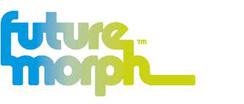- View more resources from this publisher
 Future Morph
Future Morph - View more resources from this publisher
 Science Council
Science Council
Case Study: Electrical and Electronic Engineering
This resource was created as part of the Future Morph programme from the Science Council and dates from 2010. Although historic, it is still relevant and useful today. It includes a video in which a student talks about his course in electrical and electronic engineering. He describes how one project was to make and test a circuit that included a light-sensitive resistor. A second activity describes a class experiment into the current and voltage characteristics of a semiconductor diode.
More details about the current activity of the Science Council can be found on their website, which includes the professional registration award for educators, Chartered Science Teacher (CSciTeach).
Acknowledgements
- Lesson plans: Nuffield Foundation Practical Physics activities; David Sang, courtesy of Institute of Physics Practical Biology activities; Carol Levick, courtesy of Society of Biology Practical Chemistry activities; Emma Palmer, courtesy of Royal Society of Chemistry
- Supporting information: CoHesion Career Development Consultancy, Brian Cairns and Ruth Wright Films: Anna Grayson,
- Production and direction: Bob Walters,
- Direction and filming: Phil Stopford and Twofour Digital Ltd,
- Post production: Exeter College
- Additional footage: WaterAid
Show health and safety information
Please be aware that resources have been published on the website in the form that they were originally supplied. This means that procedures reflect general practice and standards applicable at the time resources were produced and cannot be assumed to be acceptable today. Website users are fully responsible for ensuring that any activity, including practical work, which they carry out is in accordance with current regulations related to health and safety and that an appropriate risk assessment has been carried out.




